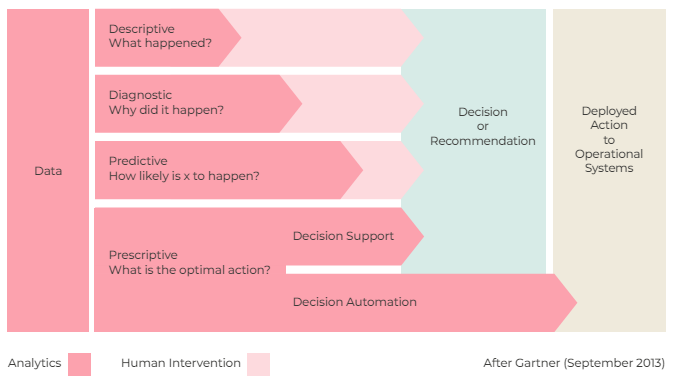In the late 2010s, Mount Sinai Hospital in New York faced a daunting challenge: how to detect sepsis early enough to save lives. Traditional methods often caught the condition too late when symptoms had already become severe. Enter the power of data analytics and artificial intelligence (AI).
The hospital’s data scientists began by analysing vast amounts of historical patient data, searching for patterns and correlations that could indicate the early stages of sepsis. This data included everything from vital signs and lab results to patient demographics and medical histories.
But identifying patterns was only the beginning. The real breakthrough came when AI algorithms were brought into the equation. These algorithms could process and analyse data far more
quickly and accurately than human doctors ever could.
In practice, this synergy between data and AI transformed patient care at Mount Sinai. The AI system continuously monitored patients in real-time, flagging those at risk of sepsis well before
symptoms became critical. This allowed doctors to intervene earlier, administering treatments that significantly improved patient outcomes.
The results were remarkable. Mount Sinai saw a significant reduction in sepsis-related mortality rates and shorter hospital stays for at-risk patients. Data and AI are both powerful forces on their own. But when they work together, they can achieve outcomes far greater than the sum of their respective parts. In this guide, we’ll explore how analytics empowers AI and vice versa. We’ll look at real-world examples to show how transformative these technologies can be when used together. Through insights from industry leaders and cutting-edge research, we aim to give you a clear understanding of how to harness this synergy in your organisation.
The Crucial Role of Data Enablement for Analytics & AI
Let’s start by defining analytics and artificial intelligence (AI) to understand this synergy.
- Analytics, according to the Cambridge Dictionary, is “a process in which a computer examines information using mathematical methods in order to find useful patterns.”
- Artificial Intelligence is defined by the same publication as “the use or study of computer systems or machines that have some of the qualities that the human brain has, such as the ability to interpret and produce language in a way that seems human, recognise or create images, solve problems, and learn from data supplied to them.”
- Synergy comes from Greek words for “together” and “work”, so you can say it literally means “work together”.
When analytics and AI work together, they transform raw data into actionable insights and intelligent actions. Analytics provides high-quality data, while AI uses this data to perform complex tasks that mimic human intelligence. This interdependence enhances both fields, leading to greater efficiencies and innovative solutions.
How AI Revolutionises Analytics
AI-driven analytics enables organisations to move beyond descriptive analytics, which focuses on historical data, to predictive and prescriptive analytics. Predictive analytics uses AI algorithms
to forecast future trends and behaviours, allowing companies to anticipate changes and make proactive decisions. Prescriptive analytics goes a step further by not only predicting outcomes but also suggesting optimal actions to achieve desired results.
Analytics from Description to Prescription

Synergising analytics and AI can drive intelligent actions that mimic human decision-making. This collaboration leads to more efficient operations, better decision making, and innovative solutions that can significantly enhance organisational performance. Later in this paper, we give several examples of this synergy.